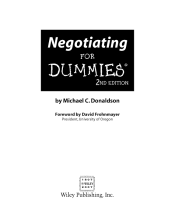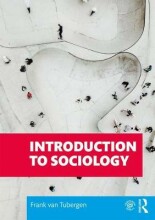Exam Review
26 important questions on Exam Review
What is Santosha and how do you achieve it?
What is the point of surrender (niyama) and what is it called in sanskrit?
What are the five branches of yoga?
- Jnana yoga: intellectual approach. Studies texts.
- Karma yoga: being of service. Ghandi. Selfless action.
- Raja yoga: the royal path. Meditation. We get ready for meditation through asanas and pranayama.
- Bhakti yoga: devotion. Kirtan (chanting). Mantra. Offeringer flowers.
- Hatha yoga: Asanas
- Higher grades + faster learning
- Never study anything twice
- 100% sure, 100% understanding
What are our thoughts and beliefs and habits that we constantly see the world through called in sanskrit?
What is the liberation from Samsara (the cycle of reincarnation) called?
What is Parusha and Prakriti?
Prakriti: everything manifested (matter).
What are the three gunas and how do they relate to our asana practice?
Rajas
Tamas
Everything is made out of this.
In Asana practice we want to balance our gunas to find Sattva.
What are the three most important Bandhas and what is their function?
Uddiyana Bandha: Diaphragm - Upward Flying lift
Jalandhara Bandha: Throat - breath controller
- Pull chin down and back and lift chest to meet chin
--> Maha Bandha: the great lock (all three combined)
By activating all three a vacuum seal is created controlling the flow of prana by either holding it in or keeping it out.
So, Bandhas are for creating the flow of energy through the body.
What are the two meanings of pranayama?
Prana ayama: breath expansion
Describe Nadi Shodhana.
In yoga it is said that it balances to nadis called Pinkela and Ida.
Pingela: right, masculine, sun.
Ida: left, feminine, moon.
--> balancing masculine/sun and feminie/moon energy
What are the 7 chakras called and where are they located?
Svadhistana - Sacral chakra
Manipura - Naval chakra
Anahata - Heart chakra
Visuddha - Throat chakra
Ajna - Third Eye chakra
Sahasrara - Crown chakra
Describe the root chakra. (Sanskrit, colour, verb, function, demons, guna, how to balance, when balanced, in a nutshell)
Colour: Red
Verb: I am
Function: survival (gathering what I need to survive)
Demons: fear (anything taking you away from feeling safe)
Guna: tamas (heavy, inerged)
To balance muladhara: standing and seated poses focused on grounding.
When balanced: grounded, secure in who you are.
In a nutshell: About what is needed for survival: safety.
Describe the sacral chakra. (Sanskrit, colour, verb, function, demons, guna, how to balance, when balanced, in a nutshell)
Colour: Orange
Verb: I feel (allowing yourself to be passionate, sexual, emotional)
Function: desire and creativity
Demon: guilt
Guna: tamas
To balance Svadisthana: hip opening, fluid flow.
When balanced: creative, friendly, attuned to feeling, sexually expressed.
In a nutshell: connected to sexuality, but also largely to all creativity: to think and bring things into the world that does not already esist, e.g. Babies, art etc.
Describe the naval chakra. (Sanskrit, colour, verb, function, demons, guna, how to balance, when balanced, in a nutshell)
Colour: Yellow
Verb: I can (your own personal power, being strong)
Function: willpower
Demons: shame (what takes you away from willpower and confidence)
Guna: rajas
To balance Manipura: twists, abs, surya A+B
When balanced: joyful, good self-esteem, strong personal power.
In a nutshell: all about whether you have power in your own self, in being able to take the next step and feeling strong in moving through life.
Describe the heart chakra. (Sanskrit, colour, verb, function, demons, guna, how to balance, when balanced, in a nutshell)
Colour: Green
Verb: I love (towards yourself and others)
Function: love
Demons: grief/sadness (taking us away from feelings of love)
Guna(s): Raja/sattva
To balance Anahata: Backbends/heartopeners, pranayama.
When balanced: unconditional love, compassionate, empathetic, emotionally balanced.
In a nutshell: All about the relationships we create with other people and the love we feel for them and for ourselves.
Describe the throat chakra. (Sanskrit, colour, verb, function, demons, guna, how to balance, when balanced, in a nutshell)
Colour: Blue
Verb: I speak
Function: Communication
Demons: Lies (going against speaking your mind)
Guna(s): Rajas/Sattva
To balance Visuddha: shoulder and throat opening, chanting, Jalandhara Bandha
When balanced: good speaker, articstic, centered, lives in the now.
In a nutshell: all about speech and expressing oneself.
Describe the third eye chakra. (Sanskrit, colour, verb, function, demons, guna, how to balance, when balanced, in a nutshell)
Colour: Indigo
Verb: I see
Function: intuition
Demons: illusion (seeing things that are incorrect)
Guna: Sattva
To balance Ajna: meditation, child's pose, full pranam.
When balanced: no fear, charismatic, total vision, master of oneself
In a nutshell: Wisdom. Helps you perceive a cosmic vision beyong the physical world. Connects you to your intuition and illuminates everythung as it is without the filter of your past, expectations, or judgment.
Describe the crown chakra. (Sanskrit, colour, verb, function, demons, guna, how to balance, when balanced, in a nutshell)
Colour: Purple/white
Verb: I know
Function: Understanding
Demons: Attachment (anything that takes you away from your true self)
Guna: Sattva
To balance Sahasrara: meditation, headstand
When balanced: no fear of death, miracle worker, open to the divine (not religious to an extreme extent, but only in a healthy way)
In a nutshell: Consciousness. All about understanding the divine and knowing that there is more to you.
Describe box breath (sanskrit, how to, benefits)
How to: making inhales and exhales equal lenth and building towards making the pause inbetween the same length.
Benefits:
- Builds awareness
- Reduces stress
- Improves lung capacity
- Introduces breath retention
Describe Ujjayi (translation, how to, benefits)
How to: resistance on inhale and exhale which activate the vagus nerve
Benefits:
- The activation of the vagus nerve means the breath is stimulating parasympathetiv nervous response
- Breath guides moevemnet
- Helps maintain rhythm
- Creates presence and awareness
- Regulates blood pressure
- Builds internal heat
Describe skull shining breath (sanskrit, how to, benefits)
How to: rapid active inhale, passive exhale.
Benefits:
- Builds heat and clears out impurities
- Brins clarity and lightness to frontal cortex
- Promotes digestion by massaging organs
- Cleanses nasal passages and lungs
- Improves circulation by increasing heart rate
Describe tongue hissing breath (sanskrit, how to, benefits)
How to: make a straw with tongue, breath in through it. Breath out through nose. Alternative: breath in through teeth (Shiktari).
Benefits:
- Cooling effect
Describe Humming bee breath (sanskrit, how to, benefits)
How to: stick thumbs in ears. Close eyes, put fingers on eyes. Breath in through nose. Breath out with closed libs and hum 'OM'.
Benefits:
- Turns off the monkey mind
Describe Viloma I, II, and III. (how to and benefits of each)
Viloma I:
- Interrupts inhale
- Benefits: rajas increase. Sympathetic tone.
- Interrupts exhale
- Benefits: tamas increases. Vagal tone, so parasympathetic.
- Interrupts inhale and exhale
- Benefits: Sattva increases. Both sympathetic and parasympathetic.
What was the grandfather of modern yoga called and what is three people he taught?
Who was Patthabi Jois?
- A number of set sequence.
- No or few modifications and props
- Athletic
Abusive - including sexual.
Not as focused on alignment as Iyengar.
The question on the page originate from the summary of the following study material:
- A unique study and practice tool
- Never study anything twice again
- Get the grades you hope for
- 100% sure, 100% understanding































